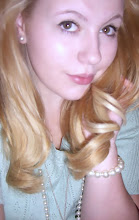For out Primary Research Ww looked at who we could interview and we found a local hair dresser in Warrington who was willing to be interviewed, as well as people with different hair styles and colours to talk to us about stereotypes and how they;re treated. We looked for locations to shoot and for our reconstruction we thought a park would be the most suitable location and for the interviews, we decided when interviewing the hairdresser to do it either in the hair salon, or set up a relevant background if that isn't possible due to noise etc. Props we thought we could use are hair care products like shampoo and conditioner, as well as having gel, wax, a hair dryer and straigteners in the background. For other interviews, we thought it would be best to film the interview in a comfortable environment for the interviewee, so they don't feel intimidated, for example, if we film infront of a blue screen or projection.
For secondary research, we looked at archive material such as videos, images, music, surveys and articles. We also looked at celebrities who prove their stereotypes wrong and prove that you can b
 e successful with what could be classed as 'socially unacceptable'.
e successful with what could be classed as 'socially unacceptable'.
A celebrity we thought that beats their stereotype is Vanessa Feltz.

We also thought about a celebrity who had a 'socially unacceptable' hair style, and we thought P!nk
was a good example and she is a very popular musician.We looked into music we could use in our documentary and we thought "Five colours in her hair" by McFly was a good choice as it is relevant to the subject.
However, we will download an mp3 of the song to use.
We then looked into archive footage we could use to anchor the points made throughout and we found a video on YouTube, showing how badly stereotypes and bullying because of hair colour can affect people in a negative way.
A marketwire survey we found showed that 40% of the men surveyed worried about hair loss, this can be found here. We also found an article that looks into the blonde stereotype here.
HISTORY OF HAIR
(60’s – 00’s)
THE SIXTIES
In the 1960’s hair always had a great deal of work to get it to the right look the person wanted. Curls were all the rage in the 60’s whether they were big deep curls, small tight curls and even spit curls. Hippies of course Prided themselves on the defiance of style.
Longer, straight hairstyles are seen in 60’s programmes although they were not the norm. These were more commonly seen on younger people in the 60’s rather than older people.
The picture to the right was more commonly seen in the long hair look, long and wavy, free swinging hair.
In the 1960’s Vidal Sassoon and twiggy had a very big influence on shorter hairstyles, they were the stimulus for a whole new view of hair styling. Named the "The Face of 1966" supermodel Twiggy sported an ultrashort hairdo which was compatible with her boyish figure.
The Bouffant is the word that describes all the poofy hair styles. The big hair of the Sixties required that hair expanded out from the head. This was accomplished by setting with rollers the size of Coke cans.
THE SEVENTIES
During the 1970s, personal expression was the key to a great hair style. Groovy looks explored personal values and individuality rather than society's expectations, and both men and women embraced more natural styles with longer locks less tamed by hair products. Funky looks were also popular, particularly for trendy, younger individuals, and offered another way to express a person’s personality. Many 1970s hairstyles are in vogue today because they are classically appealing, particularly for anyone interested in a stylish natural look they can care for and maintain easily. This says that 70’s hairstyles are coming back into today’s society as they had big hair with lots of products although easy to maintain.
THE EIGHTIES
In the 1980’s everybody wanted to be a rockstar or at least wanted to look like one, hats and super straight hair was popular, however for the younger people side ponytails were all the rage. 1980’s was time for punk, being a big influence for the “emo” scene now, mohawks and big, big hair was popular for both males and females. Untamed curly hair and creative braiding was also a familiar sight to see in the 80’s. Other removable hair styles were popular in the 1980’s. For celebrities; short hair and stunning afros were popular and were also popular with the mainstream public. The most popular look was just basic cropped and choppy hair.
THE NINTIES
Hairstyles of the 1990’s for women were heavily influenced by Rachel from the T.V. show friends. Having a shoulder-length, sleek and layered style with a grown out fringe and highlights mainly around the face.was all the rage in the 90’s for a lot of women. This was called the “Rachel cut”. In the 1990’s hair changed rapidly throughout the year from having a dirty blonde and choppy hair, through to a thin bob influenced by the character lois from superman. This hairstyle was then taken and changed by posh spice and was changed into a smaller and heavier bob which a lot of women had copied. As it was for the women of the 90’s movies and music had a heavy influence on male hairstyles, actors from keanu reeves to joey from friends and in music from mc hammer to vanilla ice. The 90’s media was the main influence for hairstyles and have had a big effect from the 90’s until now. Zig Zags and nike ticks were a popular style in the 90’s with most teens as these were seen in a lot of rap music at the time

No comments:
Post a Comment